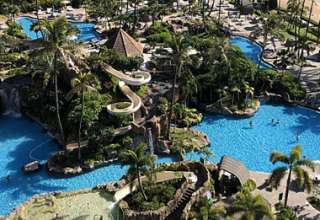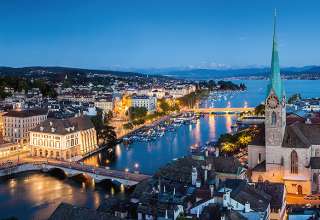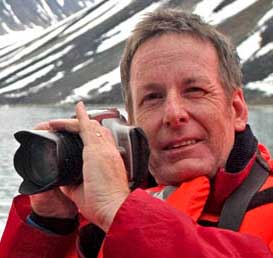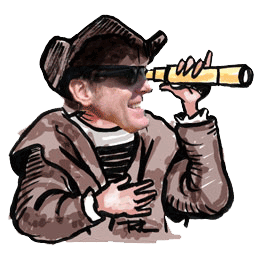I’m not going out on a limb when I proclaim Switzerland to be one of the world’s most spectacular tourist destinations. Within an area roughly the size of the state of Maryland, there is such an abundance of awe-striking beauty, recreational activities and cultural attractions that the nation has become a Mecca for visitors of every age and nationality.
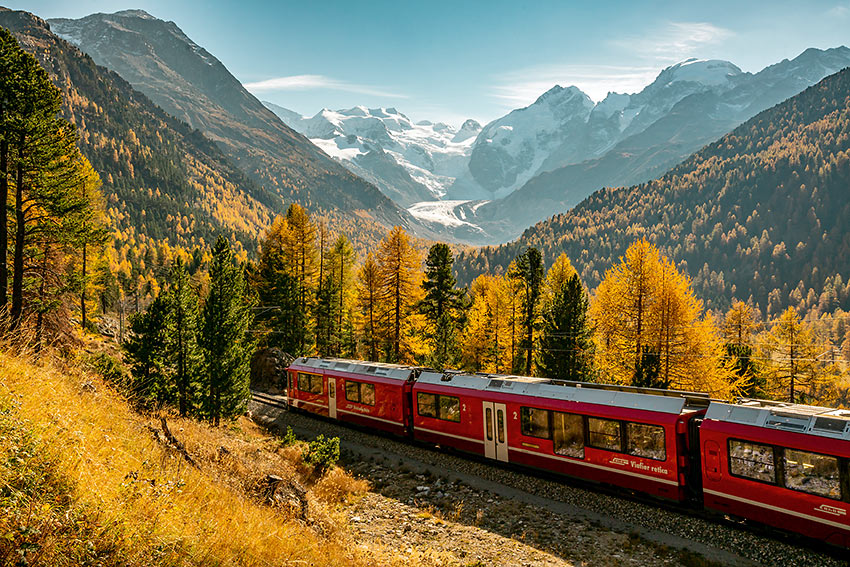
Switzerland is made up of three dissimilar geographical regions: the Jura, the Mittelland and the Alps, perhaps best known to Americans for its Interlaken area and mighty Matterhorn, despite its gradual melting, dare I say, due to climate change. One area within the Alps not much explored by U.S. tourists, but popular with Europeans for decades, is the canton of Graubünden in the southeastern portion of the nation. Covering approximately one-fifth of the country’s area, the remote and sparsely populated Engadine, a long high Alpine valley region in the Swiss Alps, offers some of the wildest and most breath-taking landscapes in all of Switzerland.
The varied Alpine world of Graubünden is brought within reach by a dense network of railways that offers journeys so scenic that many visitors can’t resist hanging their heads out train windows to bask in a world of lush valleys, sweeping mountain peaks, and glacier-fed rivers and lakes.
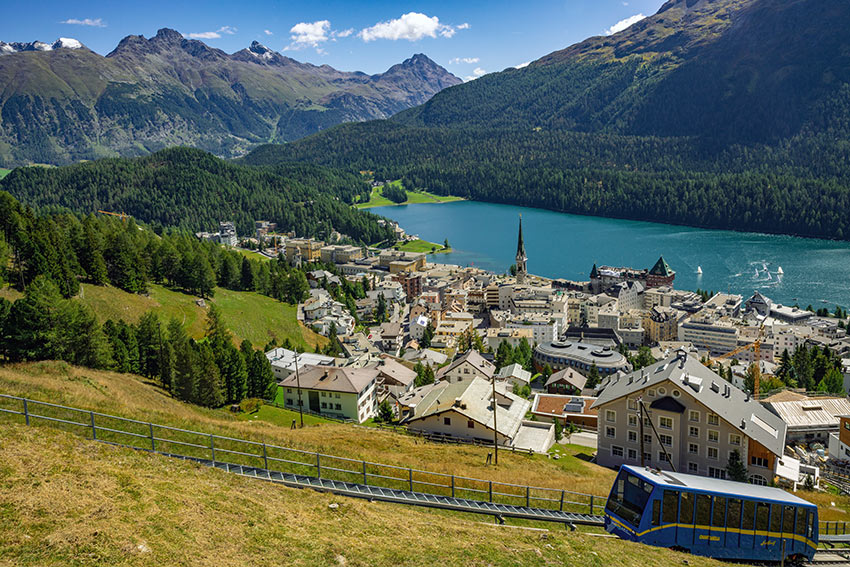
ST. MORITZ, “the rooftop of Europe,” has the appearance of a quaint village, despite its palatial hotels and expensive shops. Once simply a sports resort – it was the site of the 1928 and 1948 Winter Olympics – today over half of the tourists who visit St Moritz during winter season don’t even ski. It is the playground for Europe’s rich and famous, a place to shop and to be seen. St. Moritz rests on a hill overlooking its namesake lake, used for recreational activities ranging from the usual swimming and boating in the summer to ice-skating and polo during the winter – yes, with real horses on the ice! The Swiss know a little about marketing for there’s generally two annual events per day ranging from the St. Moritz Gourmet Festival and Festival Da Jazz to the British Classic Car Meeting, Engadine Ski Marathon and Summit Electronic Music Festival. These events keep regular visitors coming each year.
The area around St. Moritz is legendary for its many funiculars and gondolas, making the surrounding mountains ideal for endless hiking – the Swiss national pastime. Everyone from young children to seniors can be seen on the well-designed trails. Swiss cows replete with cowbells, undisturbed Alpine villages, vistas more spectacular than any postcard can depict are guaranteed rewards on every hike. Stopping for lunch, or just a coffee or Rivella, the most popular Swiss soft drink, is always part of the experience. Amazingly, even the little ‘tourist restaurants’ have great food and service. This is Switzerland, and everyone expects the best.
The magnificent views from St.Moritz encompass the mountains from Piz Languard to Piz Julier, famous for Julier Pass, where Julius Caesar’s Roman legions crossed the Alps to crush the Gauls. Study your map and you’ll see a few Roman roads still used today as footpaths.
Regional isolation is reflected in Graubunden’s ethnic mixture and its series of Romansch villages. The Romansch are believed to be a composite of mountain people and Roman soldiers, who stayed and married locals after the collapse of their empire. Their language – along with French, Italian and Swiss German – is one of Switzerland’s four national languages and considered to be the closest living language to Latin. While only a small percentage of the population speaks Romansch, those who do speak it with pride and honor. Another characteristic of Romansch pride is the use of sgraffito – not completely unlike our graffiti – a decorative design that is affixed into a building’s façade throughout Romansch villages. Virtually every Romansch house has its family crest on the exterior.
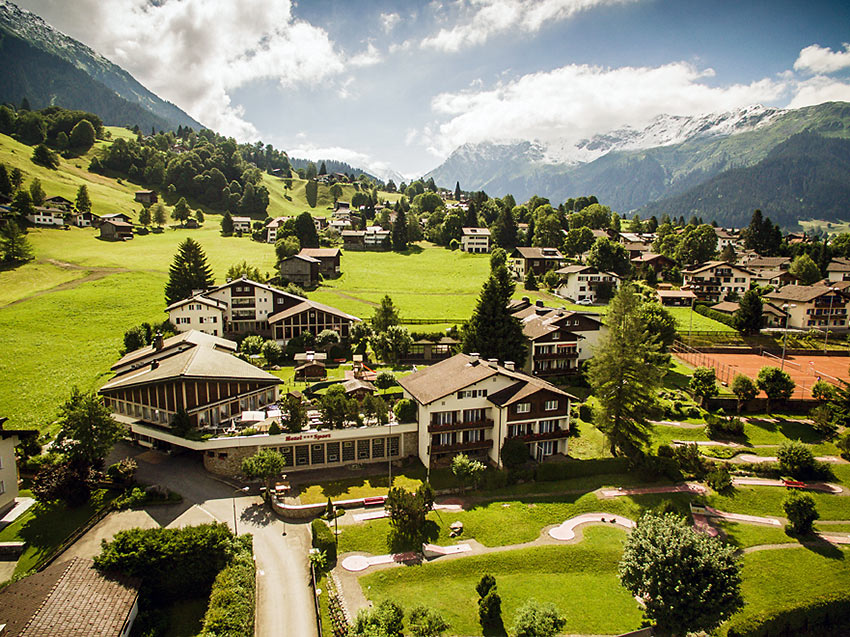
KLOSTERS proves to be another worthy destination. Nestled in an Alpine valley, it has been getting press as the ski resort of choice for England’s Prince Charles. It’s an easy-going change of pace after St. Moritz, and certainly more affordable. The hiking is superb as is the golf, where courses are designed around nature, rather than the American way of doing the opposite. The Hotel Vereina features luxurious accommodations, along with scrumptious regional cuisine. In fact they have a pretty good spa right at the property.
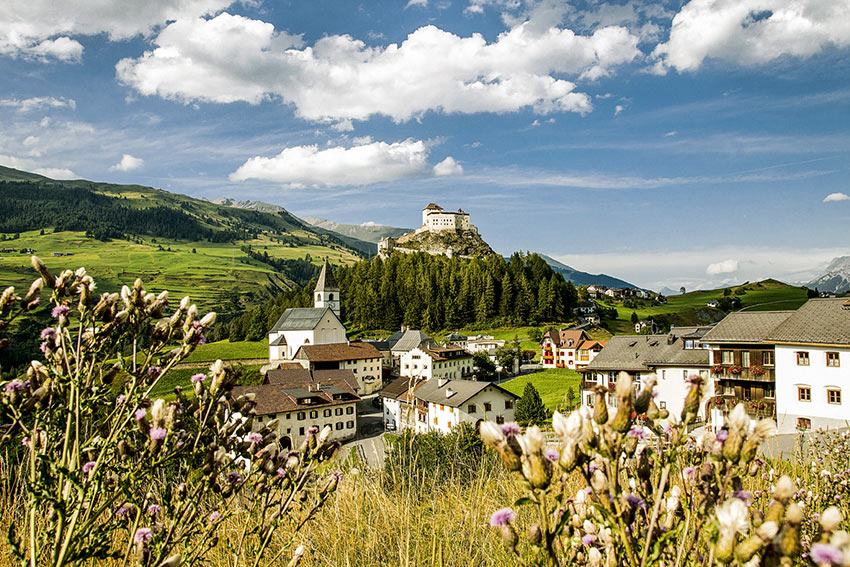
And then there is SCUOL. If ever there was a place to kick your feet up and enjoy the water, this is it. The quiet village resort specializes in spa experiences that are as historic as the Roman Empire. The Romans, never strangers to creature comforts, embraced the area as a destination to cool their well-traveled legionnaire heels. Today Scuol has reestablished itself as a resort for everyone.
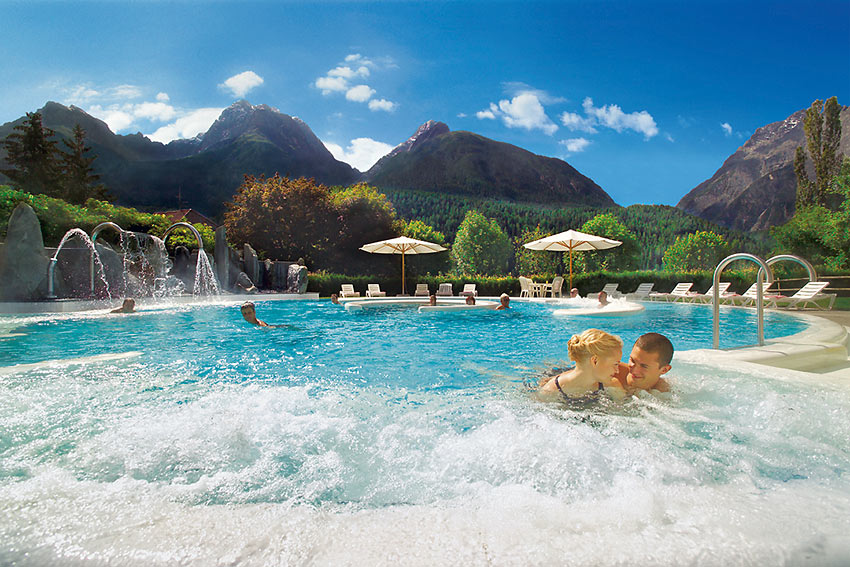
The 2½ hour-long Roman-Irish bath, a blending of two ancient cultures, is a not to be missed experience. The Romans believed in the health benefits of steam baths of varying temperatures, while the ancient Irish enjoyed a combination of bathing in hot water, followed by dry air. This rejuvenating bathing tradition encompasses 10 different stations, beginning with an invigorating massage, and ending with a 30-minute nap with the Swiss Alps as a backdrop. Curiously enough, my companion and I both hit a level of euphoric nirvana at roughly the same moment. Even the ‘champagne’ mineral water in Scuol is famous, with locals lining up at the many fountains that grace the village, filling their jugs for the day. There is an array of pensiones and hotels in Scuol to choose from, but the charming family-owned Hotel Engiadina, a typical Engadine house in the historic center of Scuol, is perfectly situated for hiking, skiing and additional spa experiences.
WHAT TO EAT
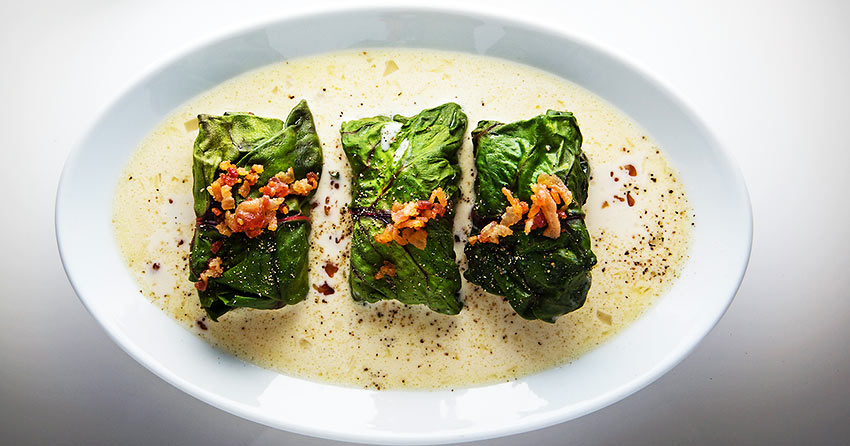
A visit to Switzerland also means eating, and the Swiss cherish their national cuisine as much as hiking in the summer and skiing in the winter. Traditional Graubünden dishes are hearty and simple. Since farmers historically populated the area, the cuisine tends to be rich in calories and suited to outdoor activities rather than a sedentary life. Case and point is Capuns, a quintessential Romansh dish made from spätzle dough with pieces of dried meat, rolled in a chard leaf. They are then boiled in a gravy of bouillon, milk and water and served covered with grated cheese. There is no single recipe for Capuns, with each household having its own unique recipe.
Regional delights also include bünndnerflieish, an air-dried beef similar to Parma’s prosciutto, and nusstorte, a flaky crusted hazelnut pastry. Local cheeses and breads rival the world’s finest. Milk chocolate, a Swiss invention, seems to work its way into virtually every meal. It can even be found in one’s breakfast cereal.
There is so much more to see and do in the Swiss canton of Graubünden, but I know our next journey will include more spas and more hikes. Perhaps I’ll even do the Heidi Trail – yes, there really is one!
For further information about travel to Switzerland, contact (877) 794-8037 or www.myswitzerland.com
